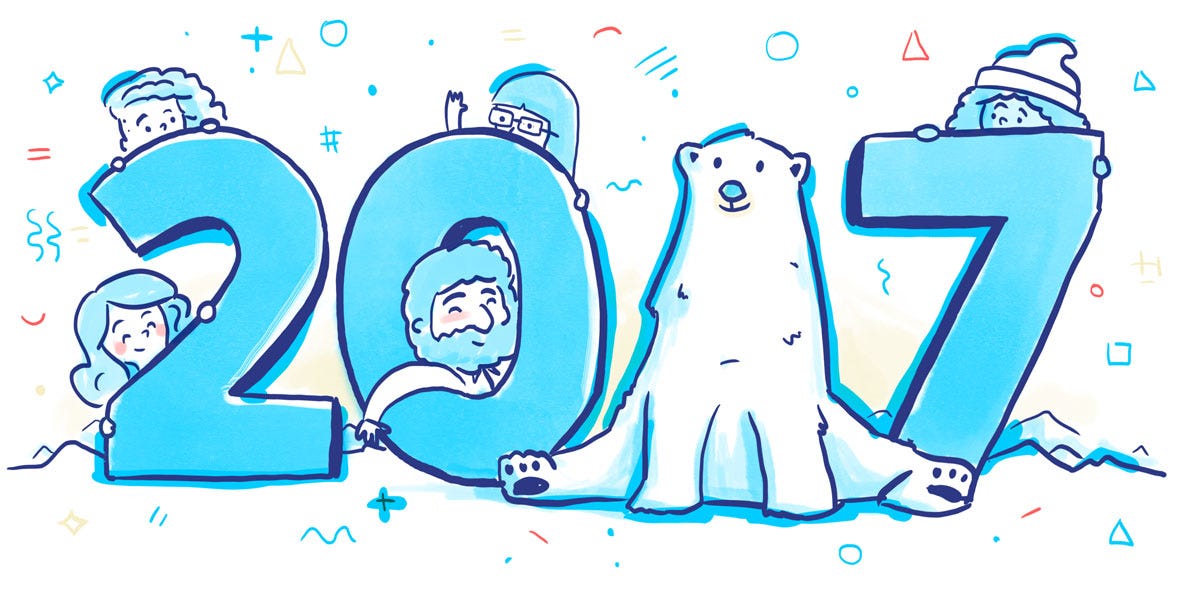
#3 Everything is a conversation
“Chatbot” is one of the hottest terms in our industry right now, and we are pretty confident you are going to be building one quite soon — if you haven’t already. But what does the future of Conversational Interfaces look like?
If you’re reading this article, there’s very little chance you haven’t heard about Conversational Interfaces in 2016. At uxdesign.cc, we’ve written about the technical and social challenges of designing conversations, helped designers who wanted to get started in that space, talked about prototyping bot experiences, and even curated some of the best chatbot experiences we’ve seen this year.
Every interface is a conversation
Essentially, a Conversational Interface is any user interface that mimics chatting with a real human.
But stepping back for a moment: isn’t every interface a conversation between the user and the machine?
Think of the most common apps you use everyday. Like hailing a cab.
First, you tell Uber that you need a ride. Then, it asks you where you are, and once it has found a driver, it tells you the time estimate. When the ride is over, it asks you how it went. And you tell it your opinion by clicking on the stars and rating the ride.
Traditional interfaces (the ones we design every day) are quite similar to a conversation — that just happens to manifest as buttons, menus and other interaction patterns. With Conversational UI the structure is the same. But instead of buttons, menus, and stars, you tell the machine what you want using words. And emojis 😘
Conversations will only get louder
“Chatbot” is the next big buzzword in design — and our industry is seeing a lot of interest from companies in exploring that space. Automated, conversational experiences allow brands to inspire, communicate with and serve their customers right where they are, in a much more scalable way.
Apps like WeChat have become the central destination for a plethora of services in China. Over half a billion people use WeChat, and it touches everything — from consumers communicating with friends, to sharing their daily moments, to buying everything from food to paying credit card bills. It’s IM, ecommerce, banking, dating, gaming and marketing rolled into one platform, where you can shop, order food, book doctor appointments, find parking spots nearby, book hotels, hire maid/nanny/babysitter, hail a taxi, and so on. All through conversations — and mini-apps that run within those conversations.
Messenger, Kik, Slack, and many other messaging platforms have been working hard in 2016 to expand their capabilities and allow for similar experiences through conversations.
Not to mention voice interfaces — Siri, Alexa, Google Home, and so many others — a natural next step for chatbots, and a business opportunity that will inevitably affect the way you, as a designer, think about products and services in the near future.
The interactions of the future are not made of buttons.
Will 2017 be the year where companies shift some of their primary experiences to a chat format? Have we found real use cases for it, or are we just following the hype?
from Sidebar http://sidebar.io/out?url=https%3A%2F%2Fuxdesign.cc%2Fux-trends-2017-46a63399e3d2%23.jde7ojtos
